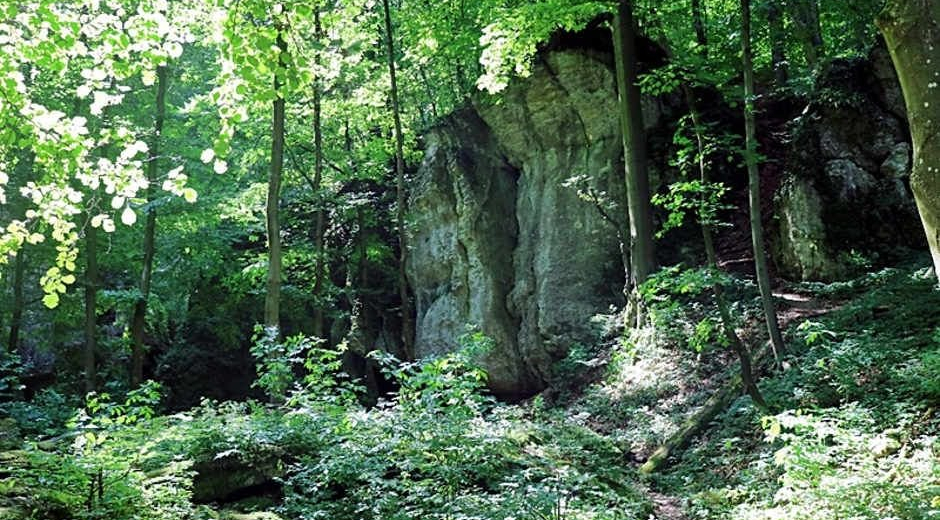
BAKONYOSZLOP – ZIRC HIKING TRAIL

Details:
- Distance: 13.2 km
- Level rise: 300 m, slope: 165 m
- Highest points: 444 m
- Lowest point: 259 m
- Highest slope: 36.5 %
- Expected time: 5 hours
- (The expected time doesn’t include rest periods.)
- Water points: Bakonyoszlop (drinking fountain), Nagyesztergár (drinking tap).
- There is a limited number of water points on the trails.
- Access to the place of departure: Buses of the Zirc - Dudar - Bakonyszentkirály line.
Description
Getting off the bus in Bakonyoszlop, we start our tour on the P + sign turning beside the Roman Catholic church. We walk past the cemetery, turn right to a side street and leave behind the houses. We climb on an open ground and then a slope leads us to a hollow road. We descend into and cross the valley of a small stream and begin to rise again. From the right there is the P path, on which we turn to left. First, the marked path continues at same level and then almost turning back it begins to rise at the rocky bottom of the Devil’s Trench (Ördög-árok). In the canyon becoming steeper and steeper, we have to dodge the rocks from the hillside. Above us, there are caves hidden in the cliff. We reach the most romantic spot of the valley, the Devil’s ditch (Ördög-gát) where the crossing is provided by a barrier, wire rope and iron stair. The rocky, deep ravine continues above the Devil’s ditch. We have to cross the stream several times which can be a little difficult after rain. Slowly the valley opens and the Z path joins to it on the right. The PZ runs together in the valley along the stream bed. At the foot of a rocky hillside, the P path goes to left to Dudar, but we remain on the Z path in the valley. After 1 km, we cross the small bridge across the stream, leave the forest and begin to climb on an open ground. Reaching the opposing allee, we turn left and take the straight road in the middle of it. We cross the industrial railway between Zirc and Dudar, which was once used also for passenger traffic. We continue our way along the allee. The path under the trees is already quiet overgrown, so we continue our journey to the left on the edge of the arable land. Following the allee, the marking turns several time at right angles and soon we reach the outskirts of Nagyesztergár. We go along the village’s main street, passing by the Pál Ányos House, the Roman Catholic church and the Local History Collection. Our journey continues on the road between Nagyesztergár and Zirc; K path arrives from a side street. The two signs continue together. First we have to overcome a small rising ground, the top of which reveals the panorama of the Zirc Basin, with the hydro globe of Tündérmajor in the background. Soon the Abbey’s view appears in front of us and the city under us is getting more and more unfolded. On the Köztársaság Street, we reach the railway station to the right and straight ahead, passing by the compound pier we arrive at the central square of Zirc, the Rákóczi square.